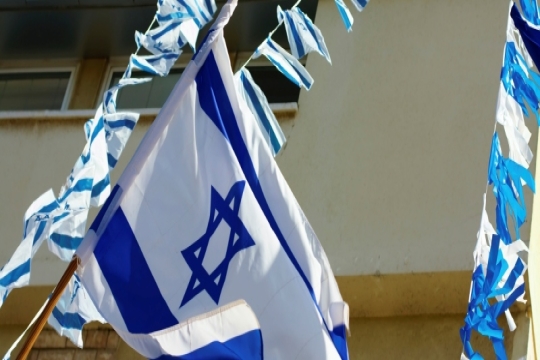
Parashat B'midbar is the first Torah portion in the book of "Numbers" and is referred to as "Numbers" based on the census that takes place among the Israelites. However, the word literally means "In the desert" (or wilderness). In the end, we see how both of those translations are important and very telling about where the Israelites were at this point in their existence.
We have been reading about the Israelites' life in Egypt, their Exodus from Egypt, their experiences at Mt. Sinai, and their growing impatience, which led them to build the golden calf. They eventually received the Ten Commandments, and Moses forgave them for their inappropriate behavior in building the calf. And then, they built the Mishkan – the Tabernacle – in which to carry the tablets.
But the text does not share this in a simple and neat way. Rather, we read through ten chapters in the Book of Numbers before eventually finding out about the journey from Egypt to the Promised Land. What could have taken ten chapters of explanation? Why was it so important to include all that information when we really want to know about their eventual arrival at the land of milk and honey?
This is when we begin to see that the Torah is filled with narratives and laws. Two very different writing styles and two different ways of gaining insights into the people and their community. Narratives tell us a story. Laws generally reflect a community's values and give us important insights into its culture. Both, however, are quite critical in understanding the experience of the Israelites.
What can be learned about the Israelites from all of these details?
- The census taking noted the number of men, women, and children, but they also wanted to know who these people were and where they came from. How many men? How many women and children? What were their family dynamics and professions? The census did more than simply count heads.
- We learn about the arrangement of the tribes around the Ohel Moed, the Tent of Meeting, and are given a lengthy description of Levites, their families, and their respective roles.
- There are laws about the purity of the camp restitution, a woman suspected of adultery, and the Nazarites.
- We are told about the gifts that the princes of the tribes brought at the inauguration of the Tabernacle.
- We also learn about the final preparation of their journey before starting out.
Again, why such a long pause? Why do we need all of those details? At first glance, the details do not add to the already established narrative of the Israelite people. What can we learn from all this information?
The Israelites were about to enter the Promised Land, after which their lives will change drastically. While traveling, it's a perfect time to stop and observe who they were, not just the number of people but, more importantly, as individuals and as a community. The only way to do this was to take a census, asking detailed questions about the nature of each person and their family.
This is also a time to observe how the community chose its leadership. Which of the members were held in greater or lesser regard? It is understood that the Cohanim were the Jewish priests, and the Israelites were the community members — the group that Moses led out of Egypt. There is also a lengthy description of the Levites, who clearly played several important roles. They were musicians, gatekeepers, guardians, temple officials, judges, and craftsmen. The Levites were responsible for the Tabernacle — building it, maintaining it, and then taking it down. They were not part of the census, but the text goes to great lengths to educate us about their work and its importance.
And finally, we observe the leaders – the princes of each tribe – as they brought gifts at the inauguration of the Tabernacle. The fact that each tribe was responsible for doing so speaks to the honor and respect held for the Tabernacle. However, the decorum called for one man – the prince of the tribe — to come forward rather than all of the people from all of the tribes.
What do we learn about this community from these details? We learn that there is an element of awe in connecting with the Tabernacle, that leadership was honored, that everyone was responsible for their camp, and that the community had laws about individual behaviors. Of great importance is the time and energy taken to do the census. The text clearly paints a process unlike a "door-to-door volunteer" with a clipboard. Every person was valued, and one felt that way because time was spent on each person.
We can learn a lot from this text that is not necessarily obvious at first glance. We often think of Torah as a text filled with narratives and stories about the Jewish people. The Torah is filled with many stories that tell us about our ancestors' experiences. We pass these stories from one generation to the next, highlighting who the Israelites were and how we can learn from their lives.
However, the Torah is also filled with many passages that include the minutiae of our ancestors' lives. While it may not be as exciting to read in narrative style, the texts are filled with laws and regulations that often have much to inform us about the lives of those ancestors and what they valued.
We have much to learn and use in our own leadership experiences within WRJ. How often do we evaluate a program or an organization in its fullness only by counting participants? How many members are in the organization? How many people attended the program? Do those numbers represent success or failure? How often do we take a "census" of our organization beyond how many people belong? Who are our members? What are their backgrounds? Why did they join? Are their family relationships within the membership? (three generations of WRJ women in one sisterhood? It's not impossible!)
And, do we acknowledge the work of the "Levites" in our organizations? There are people who make sure the community runs as smoothly as you like and keeps it running flawlessly without having to tell them. Sometimes our systems run so smoothly because of a small group of people who simply take care of the most critical needs for our group to succeed in the "big picture." The Torah text goes to lengths to explain the roles and responsibilities of the Levites, thereby telling us how important they are to the larger community. How do you acknowledge the "Levites" in your organization? Maybe you assume they feel honored and respected, but it is always worth revisiting and not making any assumptions. Everyone wants to feel important and valued.
Related Posts

Continuing to Educate and Empower People Together

My Challah-Making Experience


